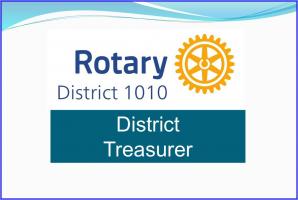Collecting Subscriptions...
This is not prescriptive as it is up to every club to decide what is best for it and their members – cash, cheques, BACS, Standing Orders, Direct Debits etc.

HELP SHEET
Helping clubs with Standing Orders, Direct debits and ways of collecting subscriptions.
At the request of the Governing Council, I am providing this “help sheet” to assist clubs manage their membership subscriptions. This is not prescriptive as it is up to every club to decide what is best for it and their members – cash, cheques, BACS, Standing Orders, Direct Debits etc.
There is also the opportunity for clubs to acquire and use contactless systems. As society moves rapidly from cashless payments to cards, they could be used for payment of subscriptions, with members using their credit cards, and for Club activities where funds are collected for charity. This document does not address these. If you do not already have one please look at the various, and numerous, systems out there and see what is right for your club e.g.
SumUp, iZettle, Paypal, Square, etc. We are not making any recommendations.
What is a Standing Order (SO) and a Direct Debit (DD)?
1. Direct Debit and Standing Order are both automatic payment methods
- A SO is an instruction your member gives to their bank to pay the club a fixed amount at regular intervals whether this is weekly, monthly, quarterly or yearly.
- With DD, your member authorises the club to collect money directly from their bank account whenever a payment is due. DD payments can vary in frequency and amount.
2. Customers control a Standing Order. You control a Direct Debit.
- The member sets up the SO. They choose the amount and frequency and can change or cancel it without notifying the club.
- In contrast, the club has full control over the payments it takes by DD. The club decides how much and how often the treasurer collects from members. The club can vary the amount and frequency of collections without further authorisation from the member and is notified automatically by the DD system of any cancellations or failures.
Direct Debit vs Standing Order – Quick comparison of the two:
|
|
Standing Order | Direct Debit |
| Set up | No provider needed. Your member controls the set up. The club is dependent on them | Bank/provider needed. The club controls the set up and the amount and date of payments. |
| Cost per payment | Ostensibly free. The club may incur a small charge from its bank for each payment. | Low. Depends on the club’s provider. Say 1% plus 20p per transaction, but providers have competitive pricing |
| Failure rates and notifications | Vary by industry. No notifications. It can take more than a month to find out about failures then treasurer will need to chase the member to set up another payment. | Relatively Low. Automatic notification. The club is notified automatically of failures and can re‐submit the payment when it wants to. |
| Flexibility of payments | Fixed payments at regular intervals only. If the club needs to amend the amount or date of a payment, the SO will need to be cancelled and a new one set up. The club will need to convince members to change the SO themselves! | High. The club can collect variable amounts or change the amount or date of payments without asking members for further authorisation. |
| Risk of late payment | Medium ‐ high. Once set up, low risk, but many businesses struggle to get customers to set up their SO quickly, or to amend it as required. | Low. The club can charge members when a payment is due. |
3. Should a club use Standing Order or Direct Debit?
- This is really for the club to decide. In most cases however, it is felt, that the costs for the club should be kept at a minimum and thus SO’s are the better option. If the club receives a monthly sum by DD this might be too costly. As an example, if the club receives an annual sum then the cost of collecting (say) £120 in one amount could be as little as £1.40 (1% plus 20p) but the provider may have a minimum charge. You will need to check.
- An SO is good if you are close to your members and you can get them to change the SO easily when required.
- This could be the better option as there is minimal administration work for you (see SO mandate suggestion) and it allows the members to stay in control of their finances.
- However, if you are not sure that your members can reliably set up and/or maintain a SO then you might feel more comfortable with a DD collection. You will need to understand the cost and administration involved with this.
- There are many DD providers and I do not recommend any particular one. Look at GoCardless and SmartDebit, just two examples.
4. How could a club go about asking its members to pay by Standing Order?
The club would need to calculate its annual subscription and ask club members to set up the respective SO with their bank directly.
The club could discuss with members:‐
- The frequency to be set up (monthly, quarterly, half yearly or annually.);
- The amount to be set up (dependent on a.);
- A unique reference for each member makes identifying individual payments easier.
As and when the club amends its subscription fees, members may have to amend their SO, dependent on point
1. above. This can easily be achieved, either by means of electronic banking, in writing or in person with the bank.
The club needs to be mindful of the frequency and amount set up in relation to the advanced payment nature of subscriptions. On 1 July the club is required to pay in advance of 6 months to Rotary GB&I and again on 1 January.
This requires enough membership fees in its accounts for all of its active members to cover the same – as well as District fees.
Finally, many clubs still use cash and cheque collections of fees. Many have also moved to payment by internet banking. All payment methods should be considered to see what is best for the club and its members. No doubt, not all will pay using one method but you can try!!
Any queries please contact me on keithhopkins@hotmail.co.uk or direct your query to the Finance Team at finance@rotarygbi.org
Errors and omissions excepted.
Keith Hopkins MBE
Hon. Treasurer June 2020
 Contact David Anderson about this page:
Contact David Anderson about this page: